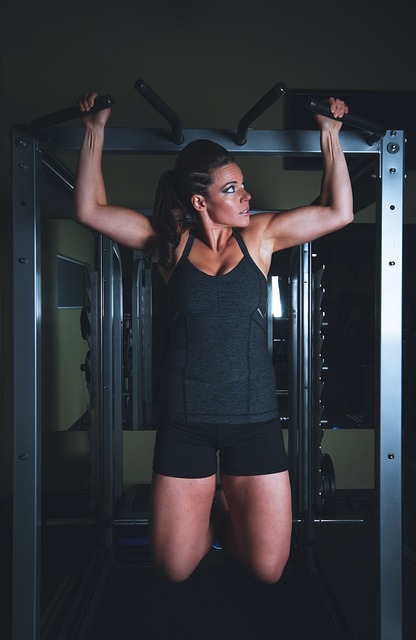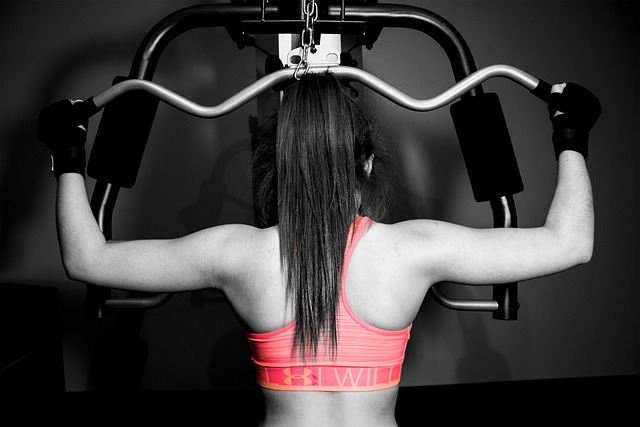The way your back will look is determined by trapezoidal, diamond-shaped, large and small round, subacute, and broad muscles. To ensure a symmetrical appearance and maintain health, you need to pump them all.
Along the vertebral column, from the sacrum to the skull, stretches a muscle that straightens the spine. It also needs to be strengthened to avoid injury during strength training and to ensure good posture.
Training Guidelines for Effective Back Workouts
Because they have proven their effectiveness during scientific research. Scientists used electromyography (EMG) — to measure the electrical activity in the muscles when performing various exercises.
How to practice
If you load the whole body in one workout, choose an exercise for each muscle group. If splits are closer to you, take two exercises from each point and add them to the day of working out the back or the day so.

Some of the exercises described in the article pump several muscle groups at once. Keep this in mind when drawing up the program. For example, you can choose one that will load both the upper and lower back well, or work out these zones separately.
Pick up the weight of the shells in such a way that the last repetitions in the approach are given with difficulty, but without compromising the technique. The number of sets and repetitions will be indicated in each exercise.
If the movement is performed with body weight, do it as much as you can.
Targeting a Diverse Range of Back Muscles
These exercises will also help to load the trapezoidal, diamond-shaped, subacute, large, and small round muscles.
Pull the upper block towards your chest. Sit on a bench, press your feet to the floor, and grasp the handle with a straight grip slightly wider than the shoulders — this position of the hands will allow you to load the widest muscles more.
You can slightly tilt the case back and fix it in this position. Fixation is of great importance: if you want to load your back to the full, the swing should be excluded.
Lower your shoulders and bring your shoulder blades together, pull the handle up to touch your chest, and then smoothly and under control return it to its original position. You do not need to raise your shoulders to your ears at the extreme point — keep them lowered and your shoulder blades brought together.
Perform 3-5 sets of 10-12 reps.
Pull the lower block towards your stomach.
In addition to the widest ones, the stomach pull loads the middle part of the trapezium and the rhomboid muscles well. Therefore, if you want to pump both the upper and lower back with one exercise, include this option in your workout.
Sit on the simulator, rest your feet on the platform, and grasp the handle. Lower your shoulders and straighten your back. As you exhale, pull the handle up to your stomach, then return it to its original position and repeat.
Do not jerk your back and do not lean back: only your hands move throughout the exercise.
Do 3-5 sets of 10-12 reps.
Oblique pull-ups
Another universal exercise that loads almost all the muscles of the Effective Back Exercises for a Strong. Unlike conventional pull-ups, it is suitable for any level of training: it is enough to change the position of the body and legs, and even a beginner can pull up.
Find a low crossbar. If you work out in the gym, you can use a barbell on racks. Grasp it with a straight grip slightly wider than the shoulders: this position of the hands involves the widest muscles of the back and the trapeze more. If possible, do inclined pull-ups on loops or rings – so the load on your back will increase.
Hang on the selected projectile, tighten the abs and buttocks, and pull the body in one line. Lower your shoulders and bring your shoulder blades together, pull yourself up until your chest touches, and drop back down.
You can simplify the exercise in two ways: find a horizontal bar higher so that the body is in a more vertical position, or bend your knees at a right angle and put your feet on the floor.
It is possible to complicate inclined pull-ups due to elevation. Put your feet on the pedestal so that the body is located in a horizontal plane.
Perform 3-5 sets 15-20 times.
Pull-ups with a straight grip
For maximum loading of the widest muscles, use a straight grip slightly wider than the shoulders. If possible, try rotating pads on the horizontal bar: they not only pump the hands and forearms but also load the back more.
Grasp the horizontal bar, lower your shoulders, and bring your shoulder blades together. Pull up so that the chin goes beyond the level of the horizontal bar, go back down, and repeat. During the pull-up, do not use jerks and rocking. When you reach the top point, avoid lifting your chin to touch the horizontal bar. Keep your shoulder blades together at the bottom.
You can complicate the exercise by wearing a weight belt. Instead of simplifying it, it is better to replace it with the traction of the upper block or the Australian pull-ups.
Perform 3-5 approaches at close range.
Rod pulls in tilt
This exercise loads almost all the muscles of the back well: the widest, trapezoids, rhomboid, and even extensor muscles. And if you only need to choose one exercise for your back, this is a good option.
Take the barbell with a straight grip slightly wider than the shoulders. Tilt the body slightly above the parallel with the floor, bend your knees slightly, hold the barbell in your lowered hands, bring your shoulder blades together, and straighten your back. As you exhale, pull the barbell up to your stomach, lower it, and repeat. Maintain your body’s position throughout the entire exercise without making any changes.
Do 3-5 sets of 8-10 times.
These exercises load the trapezius muscles the best.
The pull of the barbell to the chin
Hold the barbell with a grip that’s 1.5 to 2 times wider than your shoulders. As you exhale, pull it up to the level of the collarbones, pointing your elbows upwards. Lower it back down and repeat.
Do 3-5 sets of 8-10 times.
Reverse swing dumbbells lying on your stomach
Lie down on your stomach on an inclined bench, take dumbbells, and turn your hands with the back side forward. As you exhale, spread the dumbbells to the sides, while simultaneously turning your hands thumbs up. Lower it back down and repeat.
Do 3-5 sets of 10-12 reps.
IYT-lifts
Lie on your stomach on an inclined bench, and take dumbbells in your hands. As you exhale, raise your hands above your head with the back side up, and then lower them to the starting position.
Now raise your hands diagonally so that your pose resembles the letter Y, and turn your palms thumbs up. Lower to the starting position.
Then spread your hands out to the sides with your thumbs up so that the body resembles the letter T. Lower to the starting position. It was one approach.
Do the same 3-5 times for 4-5 repetitions.
These two best exercises for the extensor muscles of the backload the entire posterior chain well, including the buttocks and the muscles of the back side of the thigh.
Deadlift
Stand over the barbell so that the neck is located above the lacing of your sneakers. Pull your hips back, bend over with a straight back, and grab the barbell with a straight grip slightly wider than your shoulders.
As you exhale, straighten your hip and knee joints, keeping your back straight. Keep the barbell close to the shins, almost touching them. Lower it down to the floor and then repeat the motion.
Perform 3-5 sets of 6-8 times.
Hyperextension on GHD
This exercise is often used at the beginning of a workout to warm up and strengthen the back, buttocks, and muscles of the back of the thigh.
Insert your legs under the rollers of the GHD simulator, and remove your hands behind your head. Lower the body, and then return to the starting position. At the top point, rise above the parallel of the back with the floor and look forward. Perform smoothly and under control, without rocking and jerking.
Do 3-5 sets 15-20 times.
You can also alternate hyperextension withholding the body and legs on the GHD simulator.
FAQ:

